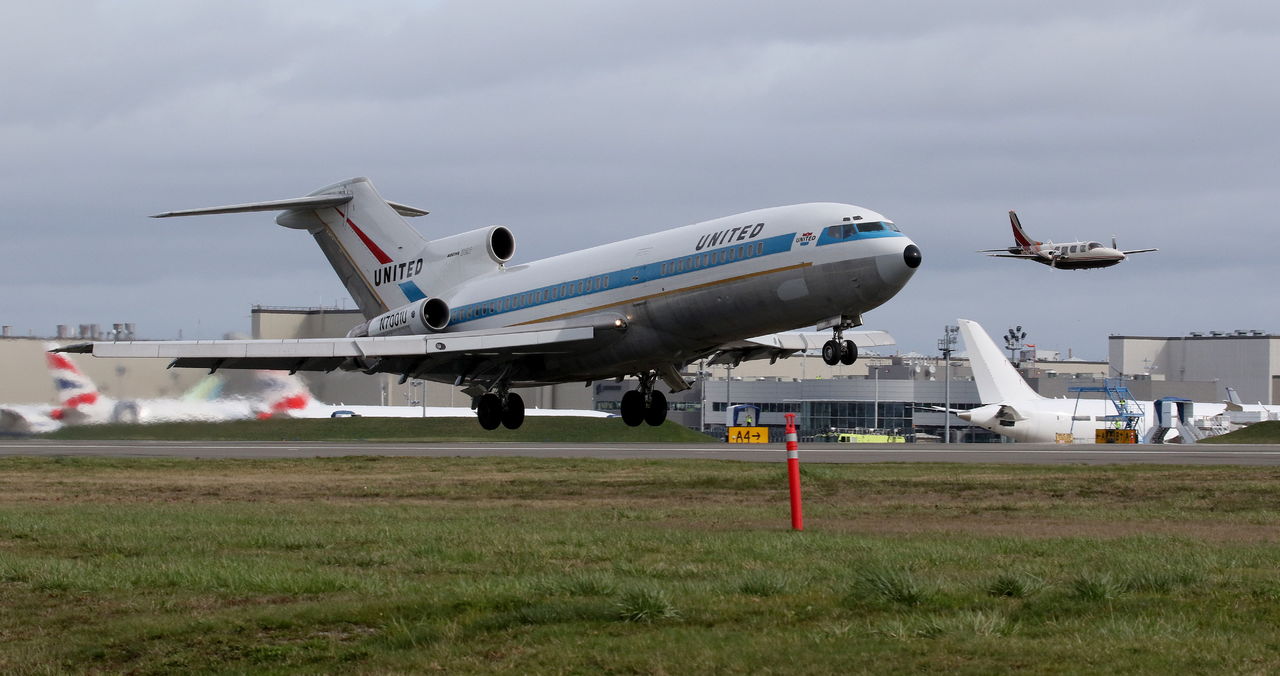On Wednesday, the first Boeing 727 made its final flight to Boeing Field. As a former 727 mechanic, who once turned a wrench on that very airplane, I’m sorry to have missed the event.
The 727s were great airplanes, and surprisingly quiet inside — even when, as a smoker, I occupied the rear of the cabin, close to its three engines.
The 727 was also a hotrod, befitting the era in which it was conceived. NASA was going to the moon, Detroit to the races, and some guys at Boeing decided the time was ripe for a short-takeoff-and-landing, 150-seat airliner. It was a risky venture, and the only airlines initially willing to share the risk were Eastern and United. Yet within a few years, airlines could hardly afford to be without them, and over 1,800 were sold before production ended in 1984. It was one of the last airplanes Boeing built “in house,” which was a particular source of pride to the many machinists who put them together. We can only guess how many mortgages and college educations were paid for from these wages.
Getting in and out of these smaller airports, with their shorter runways, required generous power, along with lots of low-speed control and lift. The power was provided by three Pratt &Whitney JT8D turbofans. To achieve the low-speed lift and control, Boeing engineers designed a wing of daunting complexity. In addition to Krueger flaps and slats on the entire leading edge of the wing, most of the trailing edge of the wing was occupied by triple-slotted “Fowler” flaps and a full complement of spoilers. During testing, a Boeing manager was heard to say the plane didn’t merely deploy flaps — it disassembled its wing (Indeed, standing under a 727 wing in the “dirty” configuration is like standing in a quonset hut with the windows open.) The cost and complexity certainly raised eyebrows among potential customers, but Boeing had done it right. The system proved to be reliable and effective — so much so that the 737 inherited an identical combination of leading- and trailing-edge devices, on a slightly smaller scale. Before long, both models were connecting more and more remote locations, including primitive runways in Alaska and many developing countries. The 747, for which many of its intended runways would necessarily be marginal, employed a nearly identical high-lift system, scaled up. Boeing knew a good thing.
In our era of cookie-cutter airliners, the 727 is a standout in style. Few passengers can distinguish a 767 from a 777, or a Boeing from its Airbus counterpart. But any child who accompanied dad to the airport a few times could pick out a Two Seven. She was the one that looked like prop from a Buck Rogers movie, and appeared to be going 500 knots just sitting on the ramp. Modern designs, for all their power and efficiency, just appear to be chewing their cud.
Airworthy 727’s still operate overseas, with a few flying charter or private flights in the U.S. They will not likely have the kind of “third life” enjoyed by old propeller airliners, and will soon disappear from U.S. airports. In the meantime, if I’m driving near an airport and see one taxiing out for takeoff, my passengers will just have to sit and roll their eyes while I pull over and watch.
Dirk DeRooy lives in Snohomish.
Talk to us
> Give us your news tips.
> Send us a letter to the editor.
> More Herald contact information.

























